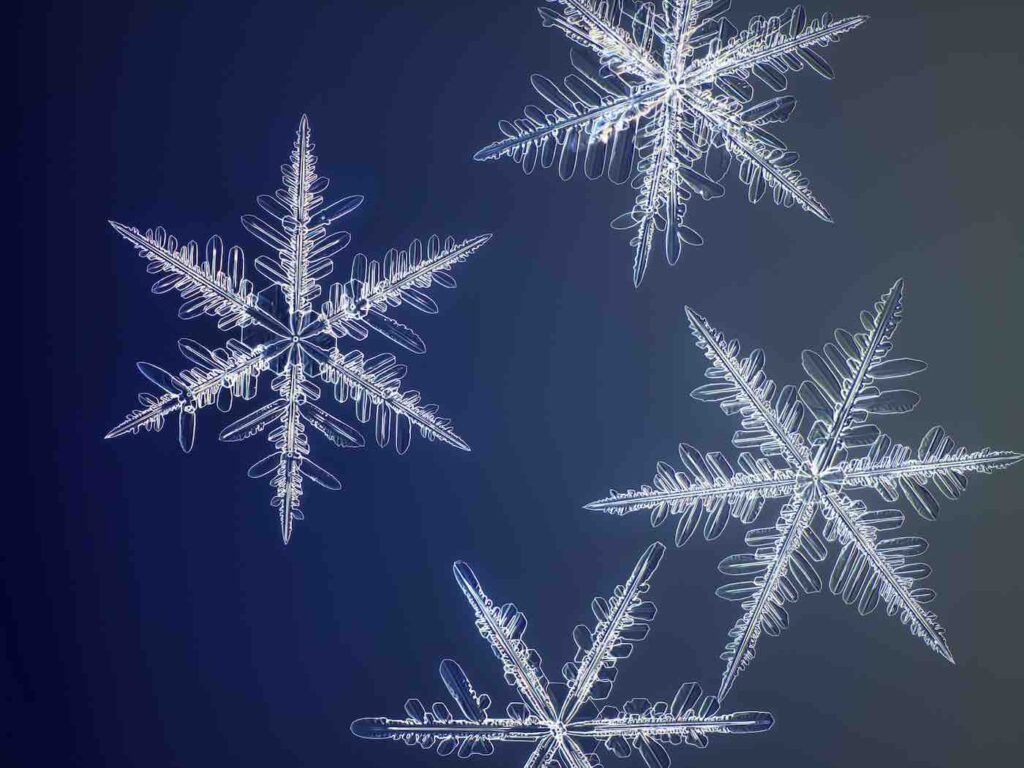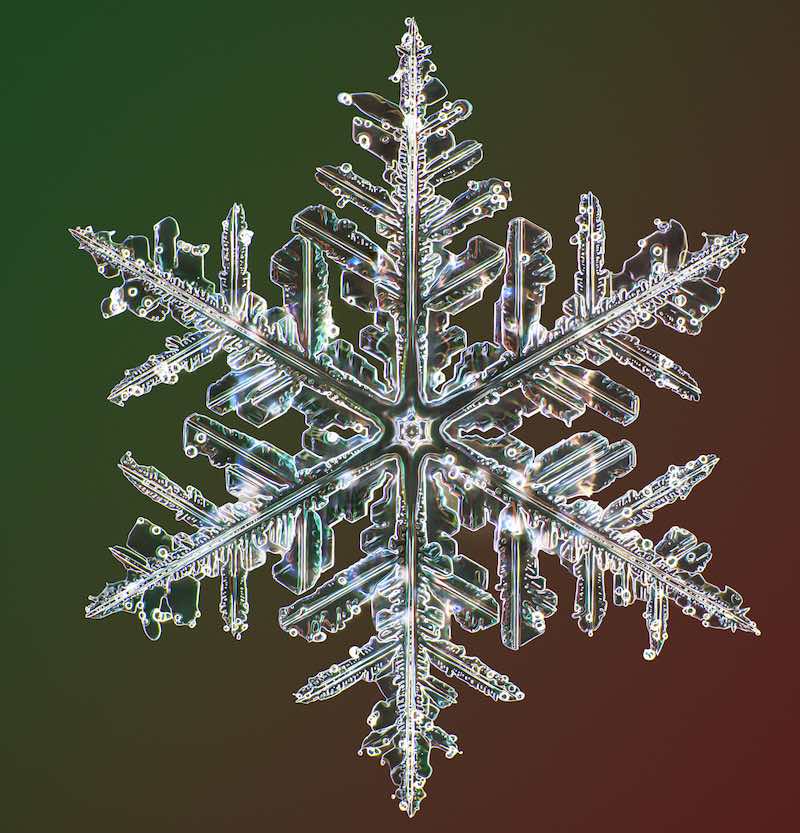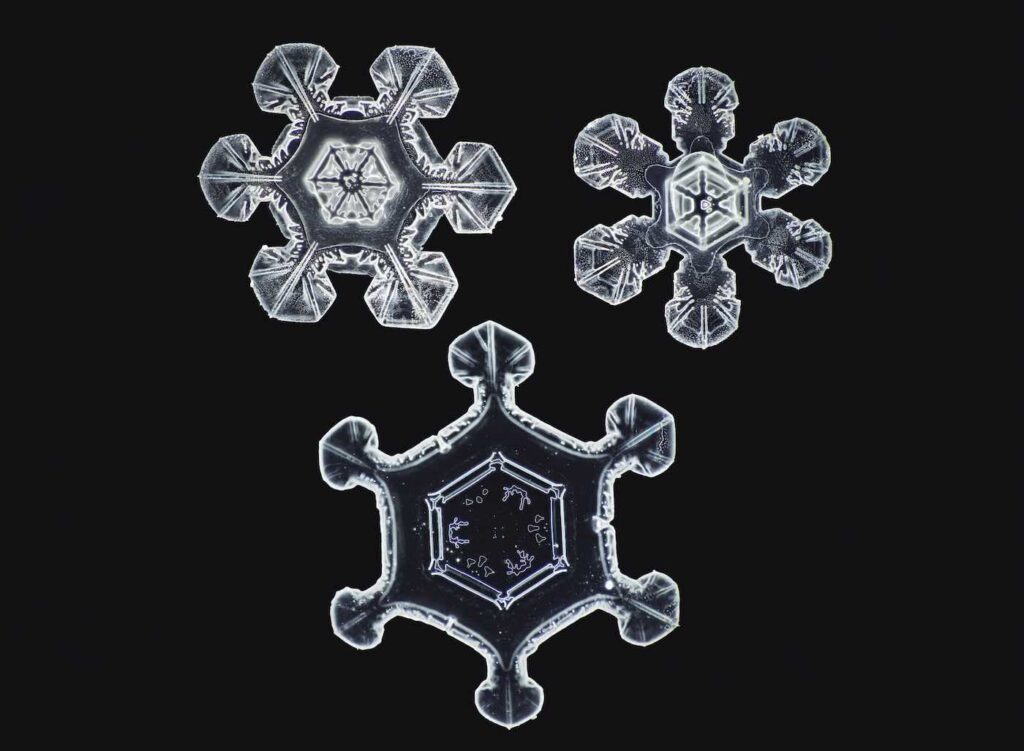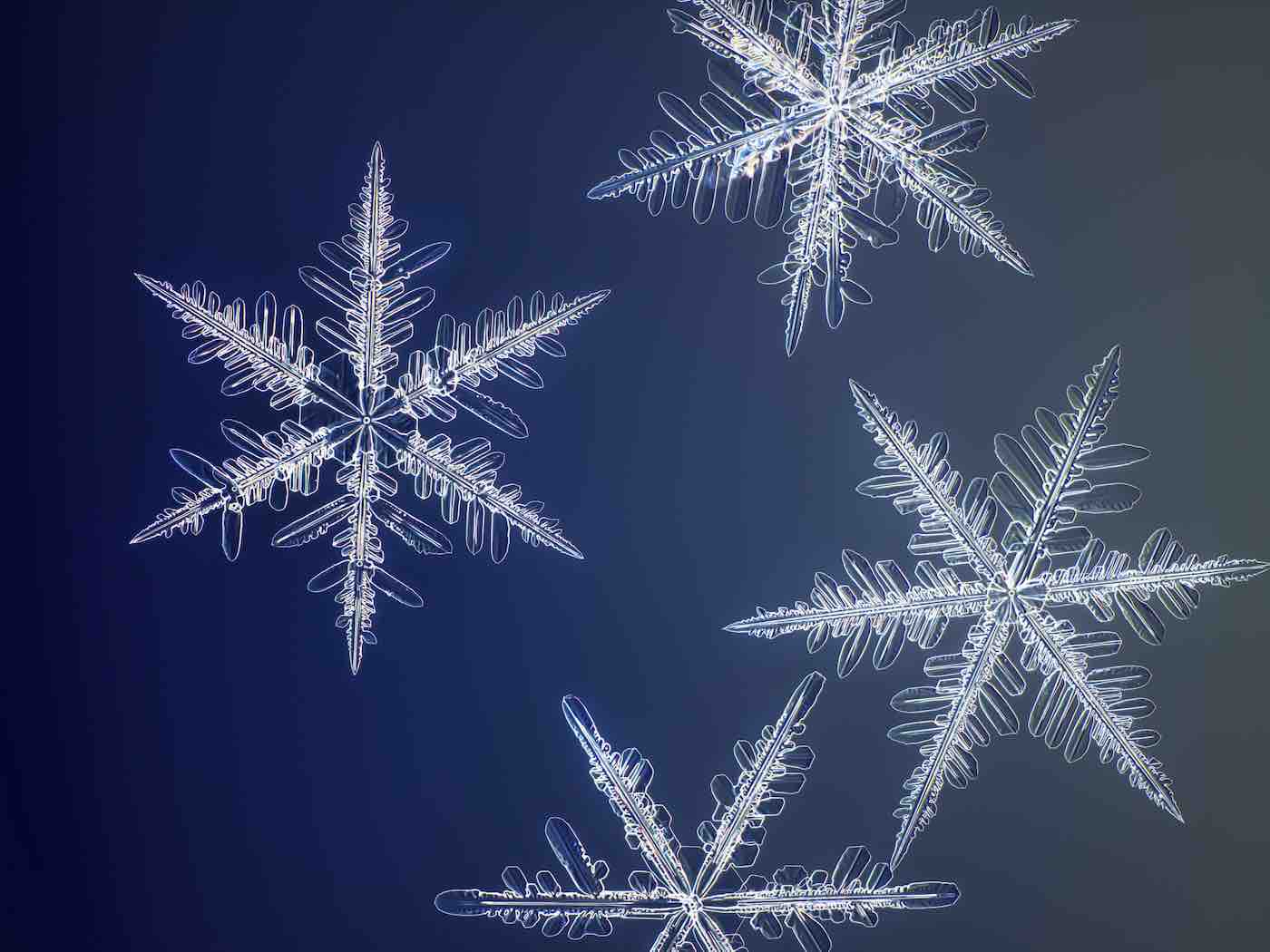Once an executive at Microsoft, he turned into a cookbook super-author with his Modernist Cuisine series. Now, Nathan Myhrvold is making a name in photography, shooting the highest resolution pictures of snowflakes ever made.

The images capture the ever-unique molecular structure in stunning color and depth. To make them required all manner of specialized equipment assembled together during lockdown as part of a garage project.
Most snowflakes are less than half of an inch wide, and will dissolve quite fast if not in contact with equally frozen material. The melting issue would be one of the biggest challenges for Myhrvold and it ended up requiring a lot of interesting tech.
As a man possessing a Ph.D. in theoretical mathematics and physics from Princeton University, and serving as Chief Technology Officer at Microsoft for 14 years, Myhrvold had no trouble solving the problem.
He got to work building a machine that was part-microscope and part-camera. It ended up standing five-feet tall on a table and weighing 50 pounds. A thermoelectric cooling system, carbon fiber framing, and cool LED lights ensured there was no heat emanating onto the snow flake in focus.
“Light could melt the snowflake, so I found a company in Japan that makes LED lights for industrial purposes,” Myhrvold told Smithsonian. “My camera’s flash is one-millionth of a second and a thousand times faster than that of a typical camera flash.”
There was also a challenge involving how to capture the physical snowflake, one that was solved using, of all things, sapphire crystal, instead of glass because it doesn’t capture and radiate heat as much as glass does.
Ice cold mathematics
In December, Good News Network examined the physics behind the formation of the iconic snowflake shape—the hexagonal kind Myhrvold photographed with his camera.

University of Manitoba researcher and mathematician Ranganathan Padmanabhan explained why a snow crystal is always depicted with six sides and six branches.
“Nature is the Mother of all symmetries. In fact, symmetry happens to be a central organizing principle in Nature’s design,” he said, noting bee honeycomb before explaining that on a molecular level, a hexagon allows for the tightest packing of things into space, meaning that Nature is a thrifty sort.
As the snow crystal falls through the clouds and the sky, it collects water—liquid, vapor, and solid, which upon exposure to differing levels of humidity and temperature, begins to build up as it spins downward in a theoretically unending variation of trajectories and conditions, eventually forming the branches or arms of the snow crystal that essentially prohibit identicality among fallen flakes.

As Myrhvold was capturing them at the end of their journey, the crystal formations had become truly breathtaking, with the arms forming long spikes, spruce-like shapes, and even small squares.
MORE: See the Moment a Bubble Froze Into a Beautiful Sphere At Sunrise Creating a Natural Snow Globe

“Snowflakes are a great example of hidden beauty,” he writes on his website. “Water, which is an incredibly familiar thing to all of us, is quite unfamiliar when you see it in this different view.”
Who knows how many snowflakes he had to subject to this photography before finding the specimens that ended up for sale on his website, but as he revealed to Smithsonian:
LOOK: Artist Creates Breathtaking ‘Drawings’ in Snow By Walking for Hours at a Time
“You have to take many photos in order to get a high enough resolution, because many photos put together allows you to have enough depth of field to see an entire snowflake very sharply.”
For snowflake enthusiasts, these pieces of artwork are available for $850 on Myhrvold’s gallery website, where he also sells his famous images of modern cuisine.
SHARE This Intimate Look at Winter With Friends On Social Media….




















